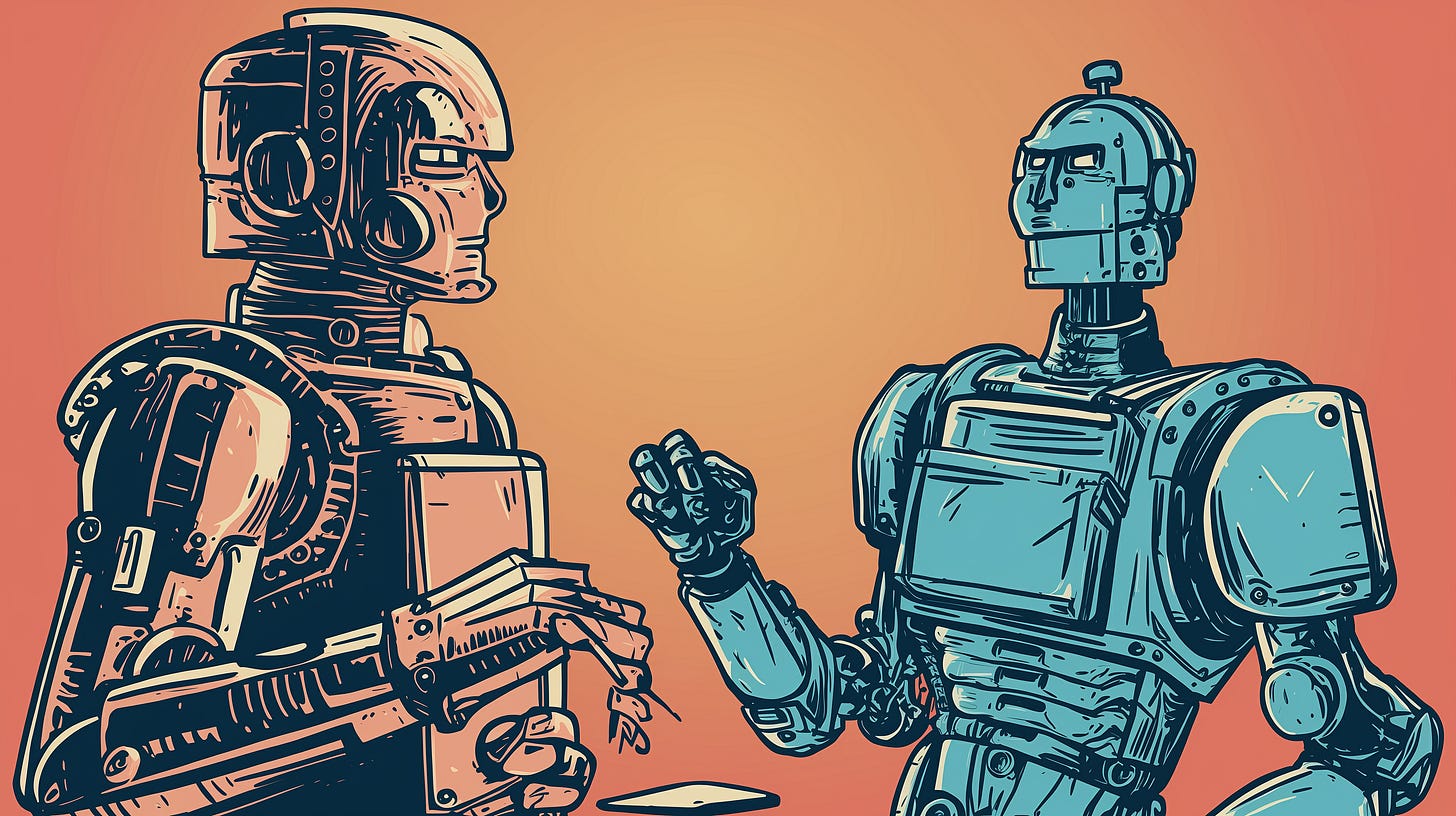💬 How AI, facts, and stories change minds
Welcome to the latest edition of Hypertextual! In this issue, we’ll look at how new tools and approaches shift beliefs, spark fresh ideas, and reshape how we engage with knowledge. Spoiler alert: don’t let conspiracy theorists near chatbots — unless you’re ready for them to find out the Moon landings actually happened!
Conspiracy crusher
Researchers have found that AI could help fight conspiracy theories. They created a customised GPT-4 Turbo chatbot that used facts to challenge false beliefs and tested it with over 1,000 people, chosen to reflect the US population.
Participants shared a conspiracy they believed, explained why, and rated their confidence. Then, they had an eight-minute chat with the bot, which responded with facts to question their views.
The results? Belief in conspiracies dropped by 21 per cent, and a quarter of those initially confident became unsure. Two months later, a follow-up showed that many still held their new views, suggesting that even quick fact-based chats can change minds.
Climate facts that stick
Want to change minds on climate change? Just share the consensus: 97 per cent of climate scientists agree it’s real and caused by humans. A global study in 27 countries showed that hearing this simple fact swayed opinions, especially for those who were sceptical or hadn’t heard it before. Even some conservatives changed their stance after learning this number.
The focus in climate communication is shifting — no more sad polar bears on melting icebergs. It’s about showing how climate change affects everyday life, like food prices and local economies. This approach, inspired by successful campaigns on social issues, links climate facts to personal experiences. Early results show it’s a powerful way to make people care.
Politics in a bubble
If shifting minds on climate change is as simple as sharing consensus, politics might be another story. A study of 7,000 people across six major democracies found that people tend to pick political news carefully, especially in the United States. Researchers tracked browsing histories and surveyed participants, uncovering a clear pattern: when it comes to politics, readers stick to sources that match their existing beliefs. Here, personal bias shapes almost every click.
AI’s scientific wins (and fails)
AI is shaking up research. First, OpenAI’s latest model, o1, has amazed researchers with its deep understanding of science. Though it’s slower, as it processes information more carefully, it’s the first AI to outperform PhD scholars on the toughest questions in the graduate-level Google-proof Q&A test. However, there’s a downside: o1 produces wrong answers more frequently than earlier models. Think of o1 as that friend who always sounds right, even when they’re way off!
Meanwhile, an AI ideas generator took on 50 scientists in a creativity test in a separate study and came out ahead. Reviewers rated its research ideas as more exciting, if a bit less practical, without knowing they came from AI. Some critics argue it’s an unfair comparison, with AI able to generate thousands of ideas in hours, but these developments hint at a future where AI plays a big role in both answering and generating scientific questions.
Scientific one-liners
Climate change is altering the Sami way of life and their language. The word jiekŋaguolli, meaning “early springtime salmon,” could disappear as the fishing season begins after the river ice has already melted, leaving no chance to see jiekŋaguolli.
Heat disrupts bumblebees’ sense of smell, a key ability for feeding and pollination. After just three hours at 40°C, bees became less responsive to scents, with the effects lasting at least a day.
Parts of Antarctica are turning green at an alarming rate. Satellite images reveal that plant coverage on the Antarctic Peninsula has expanded nearly 14-fold in just 35 years.
Researchers examined over 14,000 chemicals used in food packaging and found that 25 per cent — around 3,600 — are detectable in people’s bodies. Of these, 80 chemicals present significant health risks.
By 2050, around 2 million people could die from drug-resistant infections each year.
Switching from pints to smaller glasses might help cut drinking. A study found that offering a two-third measure led to customers drinking less overall.
Thanks for reading! If you enjoyed Hypertextual, don’t forget to hit like and share it with some friends. See you next time!
Elia Kabanov is a science writer covering the past, present, and future of technology (@metkere).
Illustration: Elia Kabanov feat. MidJourney.


